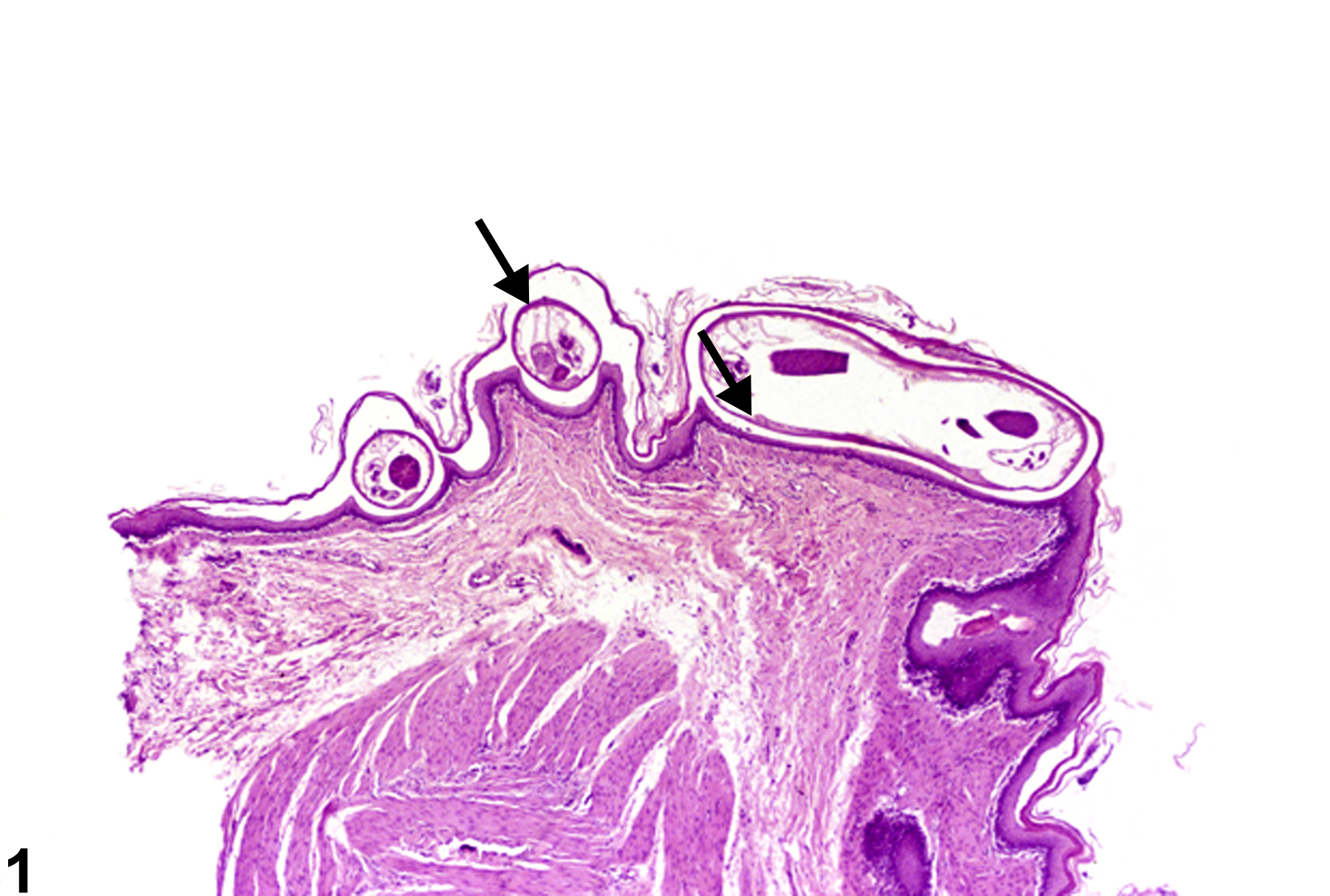Alimentary System
Stomach, Forestomach - Parasite, Metazoan
Narrative
Stookey JL, Moe JB. 1978. The respiratory system. In: Pathology of Laboratory Animals, vol 1 (Benirschke K, Garner FM, Jones TC, eds). Springer, New York, 71-113.

Stomach, Forestomach - Parasite, Metazoan in a male F344/N rat from a chronic study (higher magnification of Figure 1). A nematode (cross section, arrow) is present within the mucosa of the forestomach.



